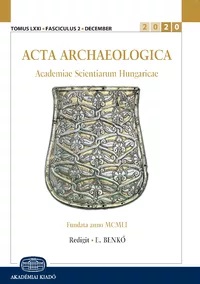Reconstructing the riverside of the Danube in the medieval city of Pest
Reconstructing the riverside of the Danube in the medieval city of Pest
Author(s): Viktória P. HorváthSubject(s): Archaeology
Published by: Akadémiai Kiadó
Keywords: Landscape archaeology; Carpathian Basin; Pest; Danube; foreshore
Summary/Abstract: In early 2017, an astonishing number of archaeological finds were unearthed during the excavation of two sites in Molnár Street (Budapest), led by the archaeologists of the Budapest History Museum. As the construction works of a new hotel took place on a registered archaeological site, and historical monuments of the city were expected to be found, the presence of archaeological professionals became essential. Even though the location was inhabited for centuries, the early modern and medieval layers were found unaffected. Because of the nature of the site, the wet and muddy soil layers along the Danube provided a favourable environment for the preservation of organic materials and metals. As the climatic conditions in the Carpathian Basin are less favourable for the survival of organic material, the findings are very special both on a local and a broader regional level. In the Middle Ages, the Danube flowed over a much wider area than it does today. Today's embankment was often under water due to its proximity to the river, especially in the days before its regulation. The population, accustomed to the threat of spring floods, built their houses much further inland and along the river. Only urban landfills and, in safer times, ports and loading docks were established. The aim of this paper is to specify past ground levels along the river, and changes in the water levels as well as the path of the Danube, with the help of as many environmental archaeological methods as possible. Similar research was already conducted on Margaret Island, in Vác and in Visegrád, so this new case study is hoped to be a useful contribution to reconstructing past landscapes along the river.
Journal: Acta Archaeologica Academiae Scientiarum Hungaricae
- Issue Year: 74/2023
- Issue No: 1
- Page Range: 175-185
- Page Count: 11
- Language: English

